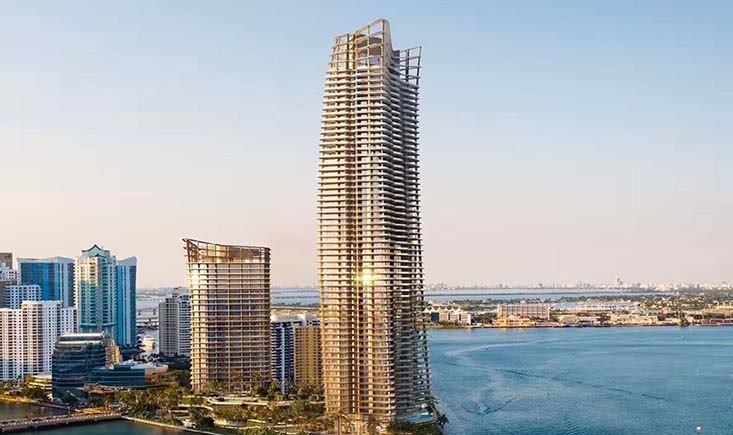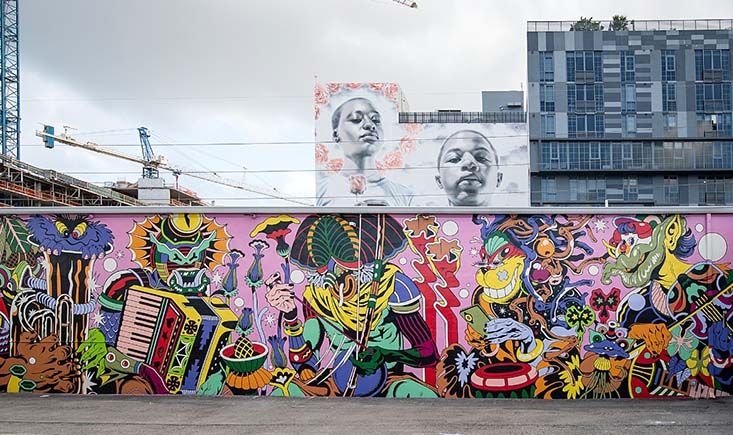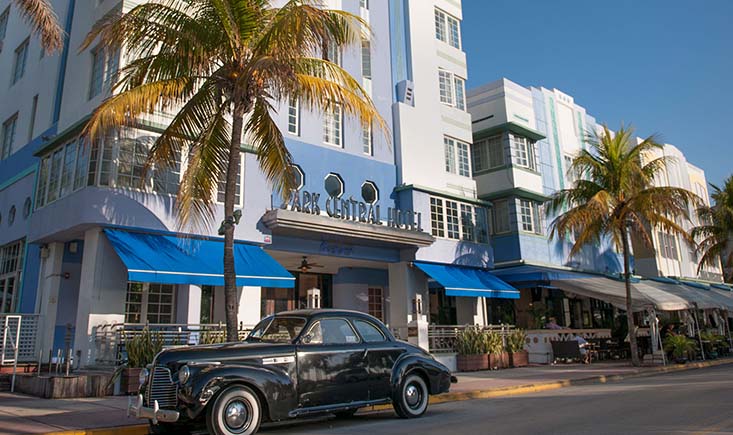
Unveiling Miami’s Architectural Gems
Book Tours & Attractions . Destinations . Sustainable TravelMy journey brought me to the dynamic city of Miami. Renowned for its stunning beaches, vibrant culture, and diverse architecture, Miami is a treasure trove of iconic landmarks waiting to be explored.
Vizcaya Museum and Gardens:
Nestled among lush greenery, overlooking the picturesque Biscayne Bay, lies the enchanting Vizcaya Museum and Gardens. This magnificent estate, constructed in the early 20th century as the winter escape for James Deering, an esteemed industrialist, effortlessly blends European opulence with tropical charm. Its Italian Renaissance-style villa boasts lavish interiors adorned with opulent furnishings, prized art collections, and architectural intricacies that harken back to a bygone era of luxury and refinement.
Stepping onto the grounds of Vizcaya, visitors are immediately greeted by the grandeur of the Main House. Its facade, adorned with intricate carvings and ornate balconies, sets the stage for a journey into elegance and history. As guests meander through the meticulously landscaped gardens, complete with tranquil fountains and winding pathways, they are offered a serene respite from the bustling cityscape.
Beyond its architectural marvels, Vizcaya serves as a cultural hub, hosting a diverse range of exhibitions, educational programs, and cultural events. Whether partaking in a guided tour to unravel the estate’s storied past or leisurely exploring its grounds, visitors are treated to an immersive experience that delves deep into Miami’s rich heritage and artistic legacy. From the sumptuous interiors to the verdant oasis of the gardens, Vizcaya offers a captivating journey through art, architecture, and history, leaving an indelible impression on all who wander its hallowed halls.
Location: 3251 South Miami Avenue, Miami, FL 33129
Getting There: Accessible by car, taxi, or public transportation, with onsite parking available for a fee and various bus routes serving the area.
Services: Guided tours, educational programs, cultural events, gift shop, cafe.
Pros: Stunning architecture, lush gardens, rich history, educational experiences.
Cons: Crowded during peak seasons, limited parking.
Exploring Vizcaya was like stepping into a fairytale. The architectural splendor combined with the tranquility of the gardens left me in awe. I highly recommend immersing oneself in the guided tours to unravel the estate’s fascinating history and significance.
Wynwood Walls:
Wynwood Walls, a sanctuary for both connoisseurs of art and intrepid urban explorers, proudly stands as an open-air testament to Miami’s vibrant cultural ethos. Once a gritty industrial district, Wynwood has undergone a remarkable metamorphosis into a dynamic hub of street art and graffiti, where colorful murals breathe life into every street corner.
Traversing the pathways of Wynwood Walls feels akin to embarking on a voyage through a labyrinth of creativity. Each mural tells a unique story, reflecting the diverse cultural influences that shape Miami’s thriving art scene. From bold abstract compositions to intricately detailed portraits, the artwork on display serves as a testament to the city’s rich artistic heritage and unwavering spirit of innovation.
But Wynwood is more than just an outdoor gallery; it is a vibrant community pulsating with energy and creativity. In addition to the captivating murals, Wynwood boasts a plethora of galleries, studios, and cafes, each contributing to the neighborhood’s eclectic charm. Visitors can immerse themselves in the local art scene, discovering hidden gems in the form of contemporary galleries or savoring a cup of coffee in a cozy sidewalk cafe.

The monthly Wynwood Art Walk adds an extra layer of excitement to the neighborhood, as galleries throw open their doors to welcome the public, and street performers infuse the streets with their infectious energy. The air crackles with anticipation as locals and tourists alike come together to celebrate art, culture, and community in this vibrant enclave.
Location: 2520 NW 2nd Ave, Miami, FL 33127
Getting There: Easily accessible by car, bike, or public transportation, with street parking and parking lots nearby, along with various bus routes serving the area.
Services: Street art tours, art galleries, cafes, souvenir shops.
Pros: Diverse artwork, vibrant atmosphere, free admission.
Cons: Crowded during peak hours, limited parking.
Exploring Wynwood Walls was a sensory delight. The energy and creativity exuded by the murals were palpable, and I found myself captivated by the sheer talent on display. I recommend visiting during quieter hours to fully appreciate the artistry without the crowds.
Freedom Tower:
Serving as a beacon of hope and resilience, the Freedom Tower stands as a symbol of Miami’s immigrant heritage and cultural diversity. Originally the headquarters of the Miami News & Metropolis newspaper, the tower gained prominence in the 1960s as a processing center for Cuban refugees fleeing the Castro regime.
Today, the Freedom Tower is a designated National Historic Landmark, housing the Miami Dade College Museum of Art and Design. Its distinctive Mediterranean Revival architecture and historical significance make it a striking presence in Miami’s skyline, while its exhibitions and events continue to resonate with visitors.
Inside, visitors can explore exhibitions highlighting the experiences of Cuban exiles and celebrating Miami’s multicultural identity. From the grand lobby adorned with marble columns to the panoramic views from the observation deck, the Freedom Tower offers a poignant journey through history and culture.
Location: 600 Biscayne Blvd, Miami, FL 33132
Getting There: Conveniently located in downtown Miami, accessible by car, public transportation, or walking, with metered street parking and parking garages nearby, and various bus routes serving the area.
Services: Museum exhibitions, guided tours, educational programs.
Pros: Historical significance, architectural beauty, panoramic views.
Cons: Limited parking, occasional crowds during events.
Visiting the Freedom Tower was a deeply moving experience. Learning about its role in shaping Miami’s identity and hearing the stories of Cuban exiles left me with a profound appreciation for the city’s resilience and cultural richness. I recommend taking the time to explore the museum’s exhibits and reflect on the tower’s significance.
Recommended Landmarks:
Art Deco Historic District:
Miami Beach’s Art Deco Historic District is a treasure trove of 1930s architecture, with pastel-colored buildings and sleek geometric designs evoking the glamour of old Hollywood. Stretching along Ocean Drive and Collins Avenue, this iconic neighborhood is a must-visit for architecture enthusiasts and history buffs alike.
Guided walking tours offer insight into the district’s architectural significance, highlighting key landmarks such as the Colony Hotel, the Carlyle, and the Cardozo. Visitors can also explore the Art Deco Welcome Center, which provides information about the district’s history and hosts cultural events.
Location: Miami Beach, FL 33139
Getting There: Located in the heart of Miami Beach, accessible by car, taxi, or public transportation, with metered street parking and parking garages nearby, and various bus routes serving the area.
Services: Guided tours, visitor center, souvenir shops.
Pros: Architectural significance, vibrant atmosphere, beach access.

Cons: Crowded during peak seasons, limited parking.
Exploring the Art Deco Historic District offers a glimpse into Miami’s glamorous past. The vibrant colors and intricate details of the buildings are captivating, and I recommend joining a guided tour to learn more about the district’s fascinating history and architecture.
Phillip and Patricia Frost Museum of Science:
Situated along the shores of Biscayne Bay, the Frost Museum of Science is a testament to Miami’s commitment to innovation and education. With its striking architecture and interactive exhibits, the museum offers a captivating exploration of science and nature.
Visitors can marvel at the Gulf Stream Aquarium, home to a diverse array of marine life, or journey through the cosmos in the Frost Planetarium. The museum also offers educational programs, workshops, and special events for visitors of all ages, making it a popular destination for families and science enthusiasts alike.
Location: 1101 Biscayne Blvd, Miami, FL 33132
Getting There: Located in downtown Miami, accessible by car, public transportation, or walking, with metered street parking and parking garages nearby, and various bus routes serving the area.
Services: Exhibits, planetarium shows, educational programs, gift shop.
Pros: Interactive exhibits, stunning architecture, educational opportunities.
Cons: Crowded during peak hours, limited parking.
Exploring the Frost Museum of Science is a thrilling experience for visitors of all ages. From the interactive exhibits to the mesmerizing planetarium shows, there’s something for everyone to enjoy. I suggest allocating ample time to fully immerse yourself in the museum’s offerings.
Miami Marine Stadium:
Nestled on the shores of Virginia Key, the Miami Marine Stadium is a modernist masterpiece awaiting restoration. Designed by architect Hilario Candela and completed in 1963, the stadium once hosted powerboat races, concerts, and sporting events, cementing its status as an iconic Miami landmark.
Although currently closed to the public, efforts are underway to restore and revitalize the stadium, preserving its architectural significance for future generations. Visitors can admire the stadium’s sleek concrete structure from afar and support restoration efforts through guided tours and community events.
Location: 3501 Rickenbacker Causeway, Key Biscayne, FL 33149
Getting There: Located on Virginia Key, accessible via the Rickenbacker Causeway, with onsite parking available for a fee, and various bus routes serving the area.
Services: Guided tours, community events, restoration efforts.
Pros: Architectural significance, waterfront location, potential for restoration.
Cons: Currently closed to the public, limited access.
While Miami Marine Stadium is currently inaccessible, it remains a significant architectural landmark with the potential for restoration. I encourage keeping abreast of updates from restoration initiatives and supporting efforts to preserve this iconic piece of Miami’s history.
Miami’s architectural landscape is a testament to its rich history, cultural diversity, and innovative spirit. Whether exploring historic estates, admiring contemporary street art, or marveling at futuristic science museums, visitors are sure to be captivated by the city’s diverse array of landmarks. By immersing oneself in Miami’s architectural wonders, one can gain a deeper appreciation for its past, present, and future as a cultural hub and architectural icon.
You may also like
Recent Posts
- Antiquing Through Time in Dundee: A Wanderer’s Chronicle
- Seaside Delights: Discovering Dundee’s Finest Seafood Restaurants
- A Taste of True Scotland: Discovering Authentic Flavors in Dundee
- Hiking and Nature: The Best Outdoor Activities in Dundee
- A Museum Trail Through Dundee: From V&A to The McManus

Leave a Reply